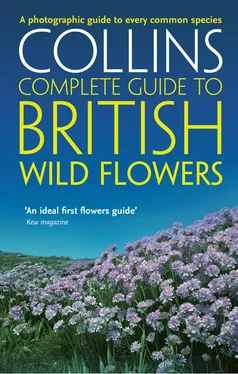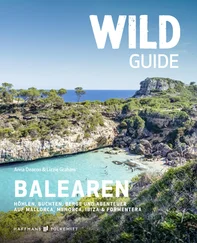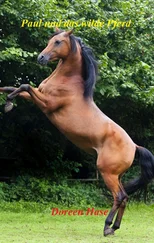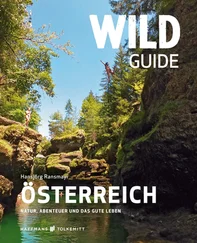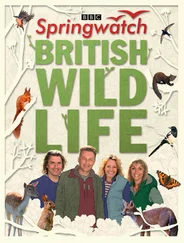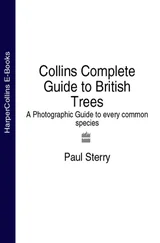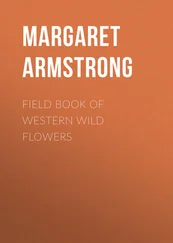Saprophyte– plant that lacks chlorophyll and which derives its nutrition from decaying matter.
Sepal– one of the outer, usually less colourful, segments of a flower.
Sessile– lacking a stalk.
Shrub– branched, woody plant.
Spadix– spike of florets as seen in members of the genus Arum .
Spathe– large, leafy bract surrounding the flower spike as seen in members of the genus Arum .
Species– division within classification that embraces organisms that closely resemble one another and that can interbreed to produce a viable subsequent generation.
Spreading– branching horizontally (in the case of a whole plant) or sticking out at right angles (in the case of hairs).
Stamen– male part of the flower, comprising the anther and filament.
Stigma– receptive surface of the female part of a flower, to which pollen adheres.
Stipule– usually a pair of leaf-like appendages at the base of a leaf.
Stolon– creeping stem.
Style– element of the female part of the flower, sitting on the ovary and supporting the stigma.
Subspecies– members of a species that possess significant morphological differences from other groups within the species as a whole; in natural situations, different subspecies are often separated geographically.
Succulent– swollen and fleshy.
Tendril– slender, twining growth used by some plants to aid climbing.
Tepals– both sepals and petals, when the two are indistinguishable.
Thallus– the body of a plant in species where separate structures cannot be distinguished readily.
Tomentose– covered in cottony hairs.
Trifoliate(or trefoil) – leaf with three separate lobes.
Truncate– ending abruptly and squared-off.
Tuber– swollen, usually underground, part of the stem or root.
Tubercle– small swelling.
Umbel– complex, umbrella-shaped inflorescence.
Whorl– several leaves or branches arising from the same point on a stem.
ATTRACTIVE THOUGH MANY OF them may be, flowers are not produced to delight the human eye. Their role is strictly functional – they are the plant’s sex organs, there to produce sex cells and ensure the maximum chance of successful fertilisation taking place.
BASIC FLOWER STRUCTURE AND FUNCTION
In a few species, male and female sex cells are borne in separate flowers, or even on different plants, but in most cases they appear together within the same flower. Male sex cells are contained within pollen , tiny grains that are produced by structures called anthers and borne on slender stems referred to as filaments ; collectively, anthers and filaments are referred to as stamens . The female part of most flowers comprises the ovary , containing the female sex cells, above which is borne the stigma (which receives the pollen) carried on a stem called the style .
Some plants, such as grasses and catkin-bearing shrubs, employ the wind to carry their pollen to others of the same species. Vast quantities of pollen are required to achieve a successful outcome with such a random process. Most other species adopt a more targeted approach and use the services of animals – insects in almost all cases – to transfer pollen. In exchange for a meal, in the form of nectar, insects inadvertently carry pollen on their bodies to the next flowers they visit; with any luck, a neighbouring plant of the same species will be visited while pollen still persists. In almost all species, flower structure has evolved to avoid self-pollination and to maximise the chances of cross-pollination – pollen being transferred to visiting insect pollinators and received from other plants by the same agents.
Bumblebees, and bees generally, are the classic insect pollinators. They visit flowers in search of nectar and unwittingly acquire a dusting of pollen, which is slightly sticky, on their hairy bodies; this is then carried to subsequent flowers they visit.
Cross-section through a typical flower, in this case a crane’s-bill.

Close-up of a stamen.
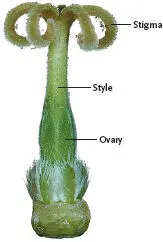
Close-up of the stigma, style and ovary.
WILD FLOWER IDENTIFICATION
SEASONED AND EXPERIENCED BOTANISTS are likely to approach the subject of identification by using definitive botanical works (floras) that rely on detailed keys, a thorough understanding of botanical terms, and a willingness to use descriptions rather than pictures to separate species. While this approach has scientific validity, in my experience it is not the way that the average floral enthusiast approaches the problem. Most tend to leaf through illustrated books to find suitable candidate species and then narrow down the field by scrutinising any closely related alternatives. This approach can succeed in most instances, especially if close care is paid to the detailed structure of the plant – leaves and fruits, as well as flowers – in addition to other factors such as flowering time, habitat preferences and distribution. I anticipate that this is how Complete British Wild Flowers will be used, initially at least, by most readers, although it will not take long for even the most inexperienced person to be able to detect similarities among plant family members, hence narrowing down the options at a stroke. Nevertheless, for absolute beginners, I felt it would be useful to provide a few pointers to lead in the right direction. I have concentrated on flower families where, in most species, there are sufficient similarities to justify generalisations. Strikingly unusual flowers, and species without large family ties, are not included in the following series of short cuts. I have used flower structure, such as the number of petals, as an initial guide. Note, however, that within several of the families identified, one or more rogue species may defy the family character and will not fall into the appropriate category. For example, although Tormentil is a member of the rose family (characterised by flowers with five petals), its flowers have just four petals.
SHORT CUTS TO FLOWER IDENTITY
3-PETALLED FLOWERS

WATER-PLANTAINS – equal-sized petals; white or pinkish petals; aquatic or marginal plants; see pp.

ORCHIDS – flowers comprising 3 petals plus 3 sepals, the latter often petal-like in colour and shape; the lower petal often takes the form of an enlarged or elaborate lip; see pp.
Читать дальше
